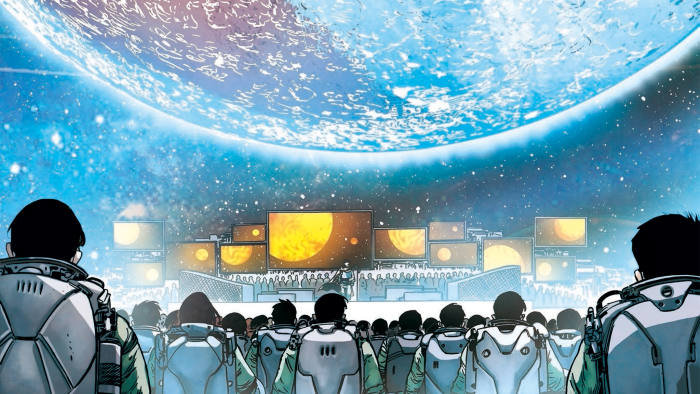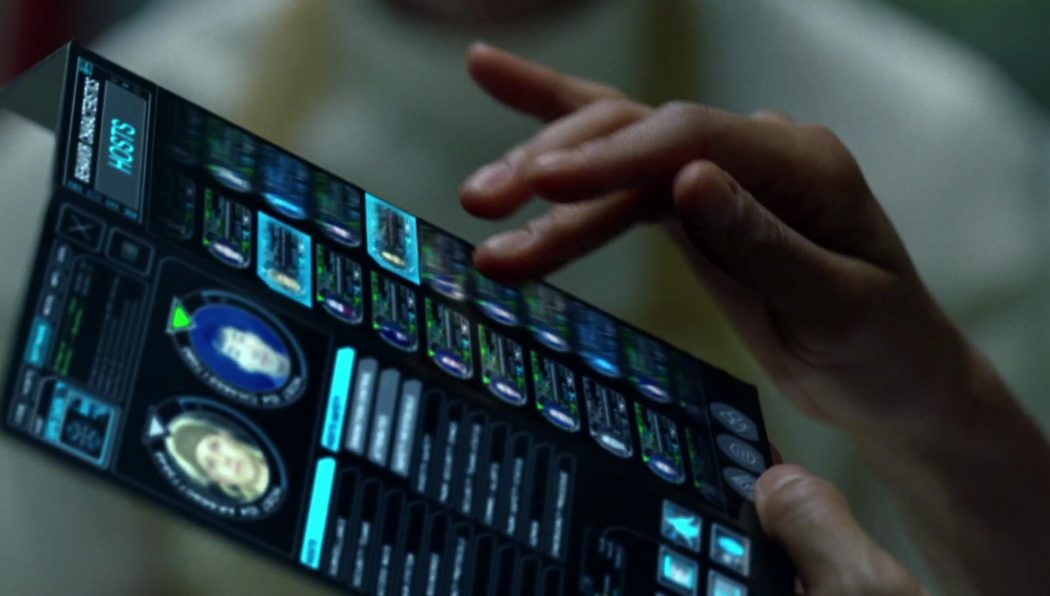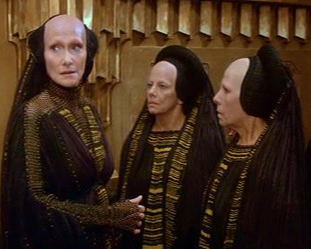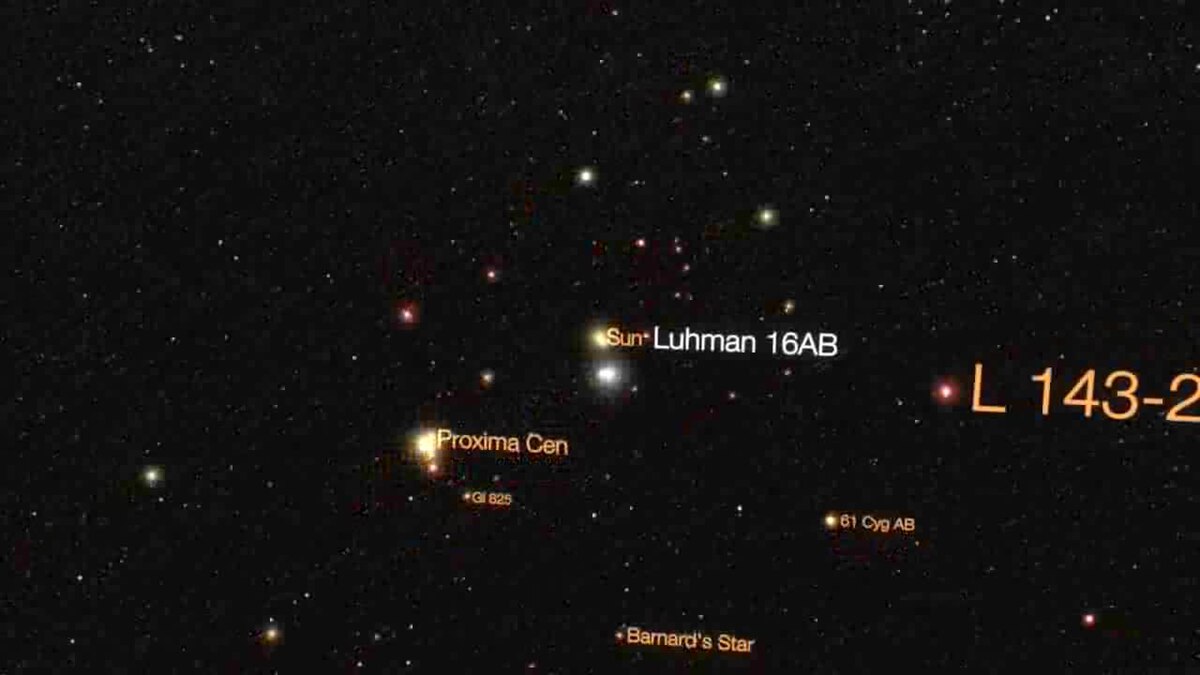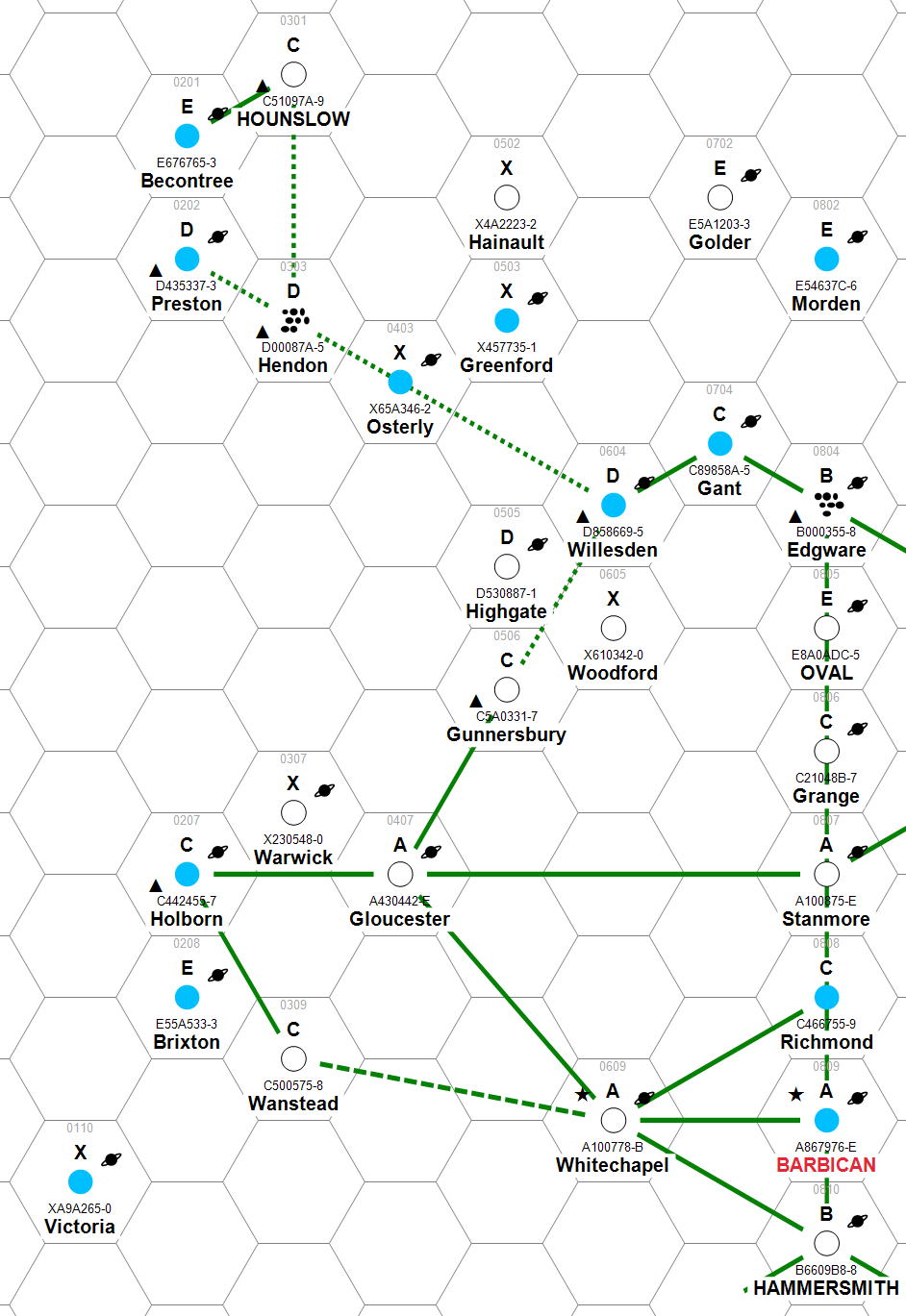Blog
Underpinning Factions in Traveller
Now that I’ve held up a thumb in the wind about how I might want to use M-Space circles in my Traveller games (with some concrete examples to support my current campaign), I’m going to follow up with some suggestions on what the descriptive mechanics for them mean in a Traveller context, and some initial rough working out of how to use them. This post is, accordingly, quite house-rulesy.
Factions in Traveller
Borrowing bits and pieces from other table-top roleplaying games for use with Traveller seems like a good way to fill out places where it has a few gaps; but I try to do this with care, mindful that the spareness of the original rules-set is more often a feature than it is a defect. Still, while Traveller provides an excellent framework for describing people, space-ships, worlds and star-systems, and creatures, one place where it stumbles a bit is on the social side of things. While it does contain a workmanlike “reaction table” and some assistance in building “patrons” and encounters, it doesn’t really give much guidance on ways to build and represent groups of people and their common interests. Enter the “Circles” rules from the M-Space game: a clean and simple way to define factions, of various sizes and kinds.
The Distant Star
The Distant Star serves as the flagship of Vargas SL, the patron merchant corporation employing our heroes in my current Traveller adventures for one of my weekly groups. I wanted to start with a standard 600T type-M Subsidized Liner from the classic game, and heavily mod it as would sensibly be done by the company for the use of one of their highly placed representatives on special trade missions. This requires fiddling with the basic design in Book 2, chopping away some of the suites, adding useful features not in the stock liner: a light refactoring rather than a complete rebuild.
Using Playsheets
Several years back, I took to the practice of running RPG sessions using what I call playsheets; one-page (front and back) easily readable summary sheets that give me vital PC reference information and status about the current situation at a glance. These have been very useful especially when running sessions not from pre-published adventures, but more improvisationally.
Out on the frontier
Returning to an established setting after a long absence can prove a challenge for RPG referees. Luckily, the built-in, modular nature of Traveller provides advantages in this regard. Having already built out parts of Barbican subsector, I can start fresh while still retaining some context by picking up my focus and putting it down elsewhere in the subsector and following the old familiar process of fleshing out a world and its neighbour. In this case a pair of worlds on the frontier of the sector: the industrial Hounslow and its agricultural bread-basket neighbour, Becontree.
Back to Traveller
After over a year of playing in another setting with my regular Friday group, we are going to be shifting gears and moving back to a sci-fi themed set of adventures. I briefly considered using the opportunity to try an entirely new game, but eventually decided to go back to Traveller and the Commonwealth setting that I had begun developing when I was last putting new material on this blog. The return to Traveller, and my home-built setting, should mean more material on this blog and a re-attempt to experience Classic Traveller as an RPG with new players.
What about the neighbourhood?
Giving meaningful hooks to Traveller characters means having a selection of patrons, rumours, and information about not just the system the characters are currently in, but also the neighbouring systems. Where do the players want to go next? Where will they get money from? Knowing what lies just beyond the jump threshold helps facilitate these choices.
The price of owning a yacht
Noble characters created from the classic Citizens of the Imperium supplement can muster out with a yacht as a benefit. Unlike the ship benefits from Book 1 (access to a Scout ship, access to a free trader), the yacht that a noble can end up with does not seem to come with strings attached (no mortgage, for example; no strong-arming by the Scout service). But just like owning a luxury car is not as free and easy as it seems, owning a yacht comes with regular costs that may not seem obvious.
Fleshing out a world
Once you have a subsector sketched out for your Traveller players, the next step is figuring out where in that subsector play is going to start. This will be some world in the subsector, and it makes sense to spend a bit more attention on that to flesh it out than just the UPP and trade code information you have from the subsector stage of prep. Based on the various characters I know will play, it seemed useful to pick a world in the middle of the map: not too near the really civilized worlds; close enough to the edges of easily travelled space to make further exploration more enticing.
Picking up the old man
The group is contacted by a quiet, conservatively dressed young man who wants to secure, via middle passage, a return trip for one passenger (and two on the return) to a nearby frontier world. The man explains that his father is due to be released from a prison on the world and he feels an obligation to meet him and convey him back home.
Building event tables
Eventually, one key to old-style sandbox play in any game genre is letting your dice choice drive the game and that means event tables. Later versions of the original Traveller game actually give more useful support for the referee in this regard than the original three books; I am going to borrow some of these techniques from the later editions and add them to the toolkit for my game.
Building out a subsector
Travellers need a place to start travelling, so the first real steps of prepration for ar eferee involve building out a subsector. Starting with the stellar data from the Near Space book published by Stellagama Publishing for the Traveller quadrant around our own Sol system, I picked one of the fourt subsector-sized quarters of the map and took to fleshing it out.
Building a new Traveller setting
After reading the in-depth series of posts about Traveller over at Tales to Astound, I decided that I wanted to transition one of my regular groups over to a series of Traveller adventures set in my own setting, rather than the Third Imperium. Starting out on the preparation work for it resurrected the warm memories I had for my first encounter with the three little black books, years ago.
Col Rendan Bardle (ret)
For the first time in many years, it looks like I will have the opportunity to play some Traveller. James Maliszewski seems set to start up another regular game set in his Ripheus Sector setting, and I have engaged to play in it. Pulling out my little black books from the gaming shelf and warming up my dice, I built my first Traveller character in a long time: what fell out was Army Colonel Rendan Bardle.
